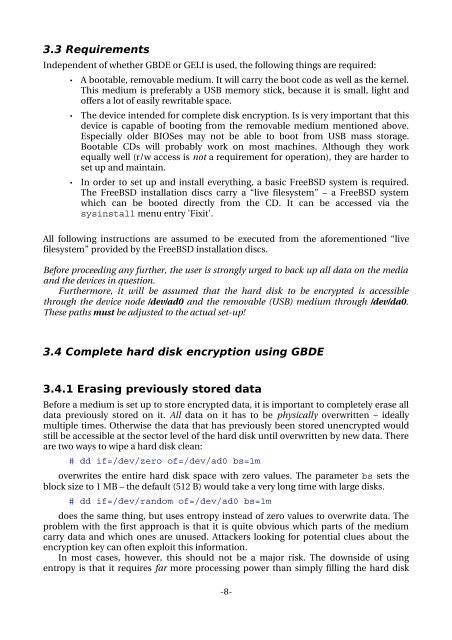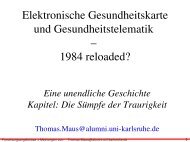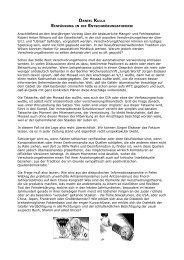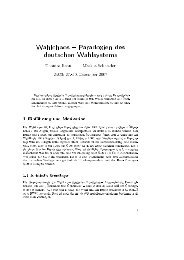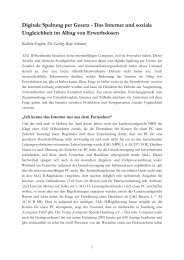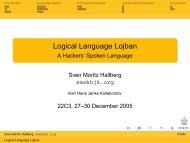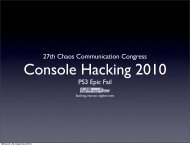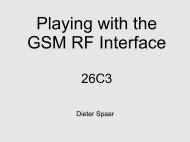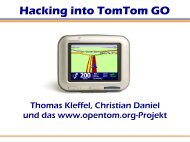Complete Hard Disk Encryption Using FreeBSD's GEOM Framework
Complete Hard Disk Encryption Using FreeBSD's GEOM Framework
Complete Hard Disk Encryption Using FreeBSD's GEOM Framework
You also want an ePaper? Increase the reach of your titles
YUMPU automatically turns print PDFs into web optimized ePapers that Google loves.
3.3 Requirements<br />
Independent of whether GBDE or GELI is used, the following things are required:<br />
• A bootable, removable medium. It will carry the boot code as well as the kernel.<br />
This medium is preferably a USB memory stick, because it is small, light and<br />
offers a lot of easily rewritable space.<br />
• The device intended for complete disk encryption. Is is very important that this<br />
device is capable of booting from the removable medium mentioned above.<br />
Especially older BIOSes may not be able to boot from USB mass storage.<br />
Bootable CDs will probably work on most machines. Although they work<br />
equally well (r/w access is not a requirement for operation), they are harder to<br />
set up and maintain.<br />
• In order to set up and install everything, a basic FreeBSD system is required.<br />
The FreeBSD installation discs carry a “live filesystem” – a FreeBSD system<br />
which can be booted directly from the CD. It can be accessed via the<br />
sysinstall menu entry 'Fixit'.<br />
All following instructions are assumed to be executed from the aforementioned “live<br />
filesystem” provided by the FreeBSD installation discs.<br />
Before proceeding any further, the user is strongly urged to back up all data on the media<br />
and the devices in question.<br />
Furthermore, it will be assumed that the hard disk to be encrypted is accessible<br />
through the device node /dev/ad0 and the removable (USB) medium through /dev/da0.<br />
These paths must be adjusted to the actual setup!<br />
3.4 <strong>Complete</strong> hard disk encryption using GBDE<br />
3.4.1 Erasing previously stored data<br />
Before a medium is set up to store encrypted data, it is important to completely erase all<br />
data previously stored on it. All data on it has to be physically overwritten – ideally<br />
multiple times. Otherwise the data that has previously been stored unencrypted would<br />
still be accessible at the sector level of the hard disk until overwritten by new data. There<br />
are two ways to wipe a hard disk clean:<br />
# dd if=/dev/zero of=/dev/ad0 bs=1m<br />
overwrites the entire hard disk space with zero values. The parameter bs sets the<br />
block size to 1 MB – the default (512 B) would take a very long time with large disks.<br />
# dd if=/dev/random of=/dev/ad0 bs=1m<br />
does the same thing, but uses entropy instead of zero values to overwrite data. The<br />
problem with the first approach is that it is quite obvious which parts of the medium<br />
carry data and which ones are unused. Attackers looking for potential clues about the<br />
encryption key can often exploit this information.<br />
In most cases, however, this should not be a major risk. The downside of using<br />
entropy is that it requires far more processing power than simply filling the hard disk<br />
8


